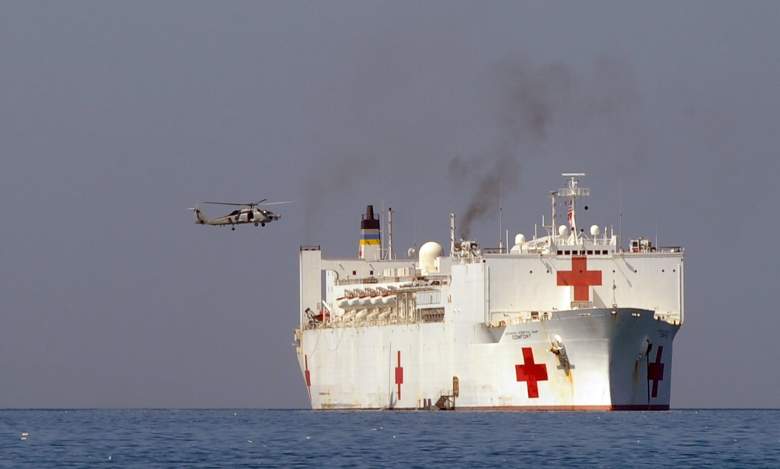
The two largest hospital ships in the world have been ordered to pull up anchor in the coming days and set sail for New York Harbor on the East Coast and Los Angeles Harbor on the West Coast with the goal of putting their compliments of 1,000 patient beds each and decks full of surgical suites at the service of those cities during the COVID-19 pandemic.
The USNS Comfort, one of two sister ships that make up the United States Navy’s Mercy-class of hospital vessels, is currently docked at the Norfolk Naval Station in Virginia winding up a round of repairs but New York Governor Andrew Cuomo said this past week that he’s been assured by President Trump that the ship will “immediately” begin making preparations to head to New York in the coming weeks.
On Sunday, during a press briefing at the White House, President Trump announced that the Comfort’s sister ship – the USNS Mercy – is heading for the Port of Los Angeles and “can get into position in a week or less.”
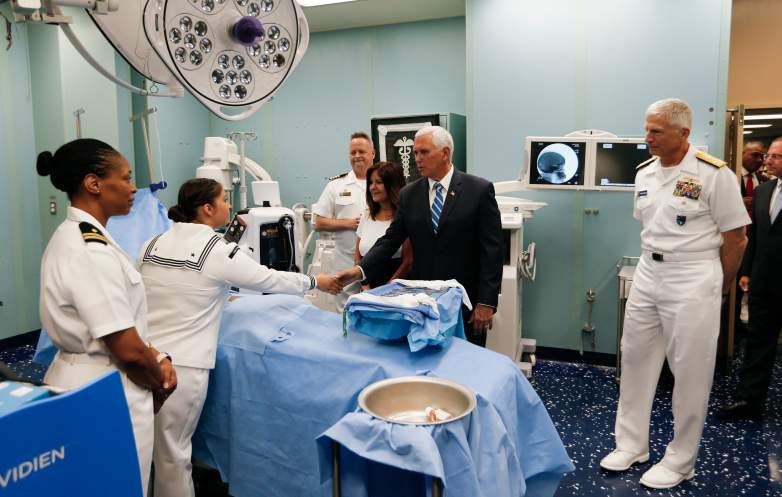
Photo by Joe Skipper/Getty ImagesU.S. Vice President Mike Pence greets Naval medical staff with his wife Karen as Navy Admiral Craig Faller, right, commander of the U.S. Souther Command looks on as he toured the U.S. Navy Hospital Ship USNS Comfort on June 18, 2019 in Miami, Florida.
Although the giant ships, which are second only to aircraft carriers in terms of their length, are being deployed because a wave of COVID-19 cases are expected to inundate hospitals in New York and California, Navy officials have explained that the hospital ships themselves will not be taking coronavirus patients onboard.
That’s because the hospital ships are less than ideal for trying to manage a highly contagious disease that requires patients to be sealed away from each other and from medical staff who need to wear extensive protective equipment and face masks at all times so they don’t end up contracting the virus themselves.
Instead, both ships are likely to serve as something of a “relief valve” for the cities’ hospital networks by taking the kind of serious, but non-infectious, cases that will still continue to arrive regardless of whether there is a pandemic, cases that require surgeries and other emergency room treatment. That way the hospitals on dry land can turn their attention to managing COVID-19 cases for the foreseeable future.
The Comfort draws its large contingent of Navy doctors, nurses, corpsmen and chaplains from the Portsmouth Naval Medical Center, the Navy’s oldest continuously operating hospital, which is in Portsmouth, Virginia.
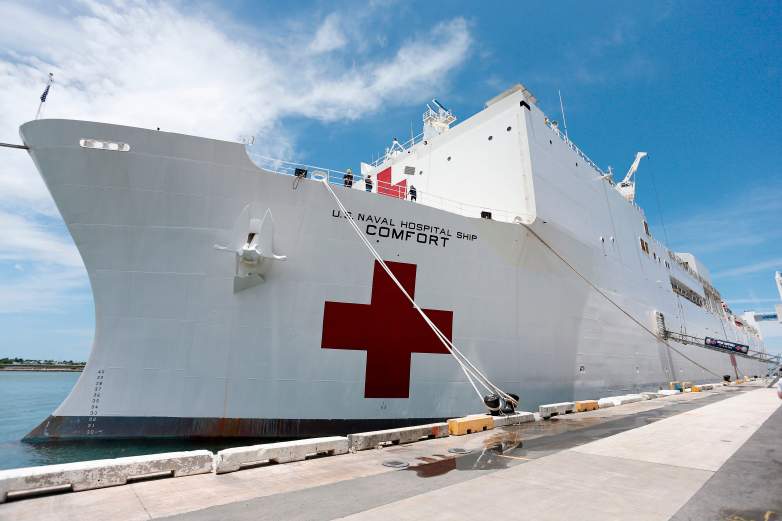
RHONA WISE/AFP via Getty ImagesThe US Naval Hospital Ship Comfort sits docked at the Port of Miami in Miami, Florida last June.
Speaking at the Pentagon, U.S. Defense Secretary Mark Esper said that while the military can bring a lot of capability to help the nation manage the pandemic, it’s not as simple as just adding military medical personnel to the front lines to augment civilian medical personnel – because in times of war a lot of the military’s medical ranks are drawn from the civilian medical sector in the first place.
“All those doctors and nurses either come from our medical treatment facilities, or they come from the reserves, which means civilians,” Esper said. “What we have to be very conscious of and careful of as we … use them to support the states [is] that we aren’t robbing Peter to pay Paul, so to speak. What I don’t want to do is take reservists from a hospital where they are needed just to put them on a ship to take them somewhere else where they are needed.”
USNS Comfort has a History of Helping with Disasters in New York, the Gulf Coast and the Caribean
The USNS Comfort sailed to New York Harbor following the September 11th attacks in 2001 and treated over 500 firemen and other first responders who had been injured during the rescue efforts after the twin towers of the World Trade Center collapsed.
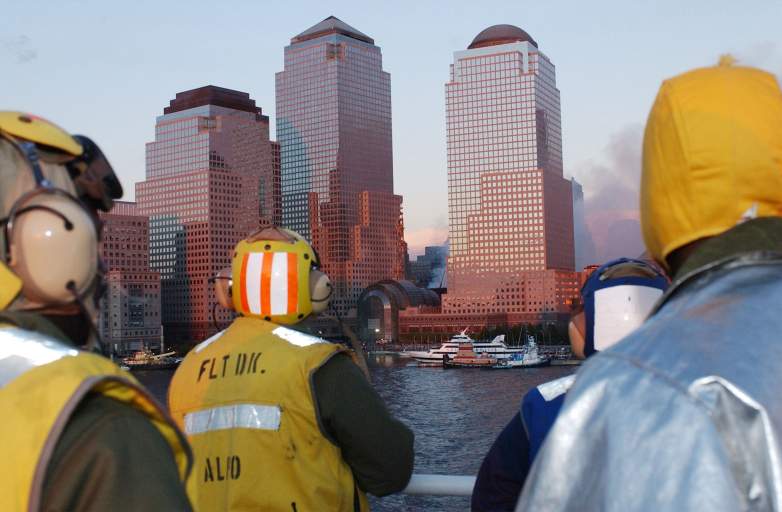
Photo by Aaron Peterson/U.S. Navy/Getty ImagesSailors view smoke and building damage caused by the terrorist attack on the World Trade Center September 14, 2001 from the deck of the Military Sealift Command hospital ship USNS Comfort in New York City. The Comfort has a crew of more than 750 Navy and civilian medical and support personnel.
Comfort also docked in New Orleans to treat victims in the wake of Hurricane Katrina and off of the coast of Haiti to treat victims of the devastating earthquake in 2010.
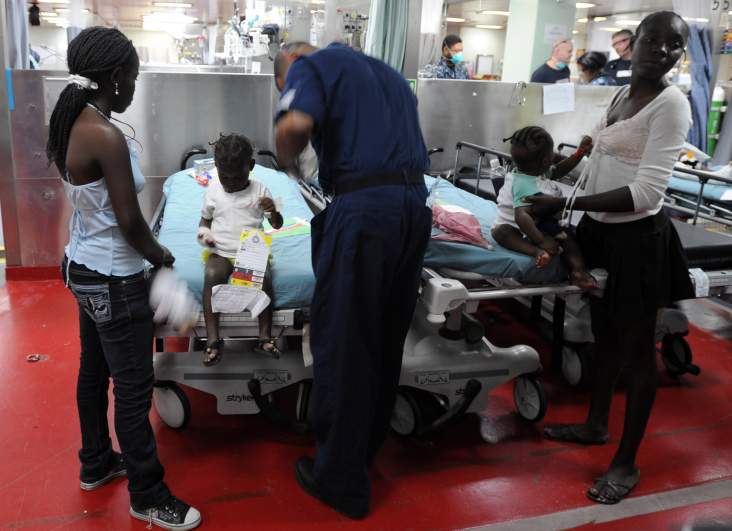
THONY BELIZAIRE/AFP via Getty ImagesTwo Haitian children are attended to aboard the USNS (United States Naval Ship) Comfort hospital ship in the harbour off Port-au-Prince in 2010.
USNS Comfort also sailed halfway around the world and was stationed in the Persian Gulf during both Operation Desert Storm and the Iraq War.
Comfort’s Sister Ship, the USNS Mercy, Also has a Storied Past
Like the Comfort, USNS Mercy, began life in the Navy as an oil tanker built in the 1970s.
A decade later both ships were converted to hospitals which are owned by the Navy but crewed by the sailors of the Military Sealift Command. The lack of Navy personnel in control of the ship helps cement the ships’ status as a noncombatant, making it a war crime for anyone to attack it even if it is serving in an active war zone.
Under the terms of the Geneva Convention the ships cannot carry any offensive weapons; although military security personnel on board do have small arms to protect the ship and the medical staff onboard.
While the USNS Comfort is based on the East Coast, the USNS Mercy has its homeport in San Diego, California.
The Mercy has also deployed to treat American and Coalition troops in the Persian Gulf and also has carried out a number of humanitarian relief missions along the Pacific Rim, including treating victims of the Indonesian tsunami.
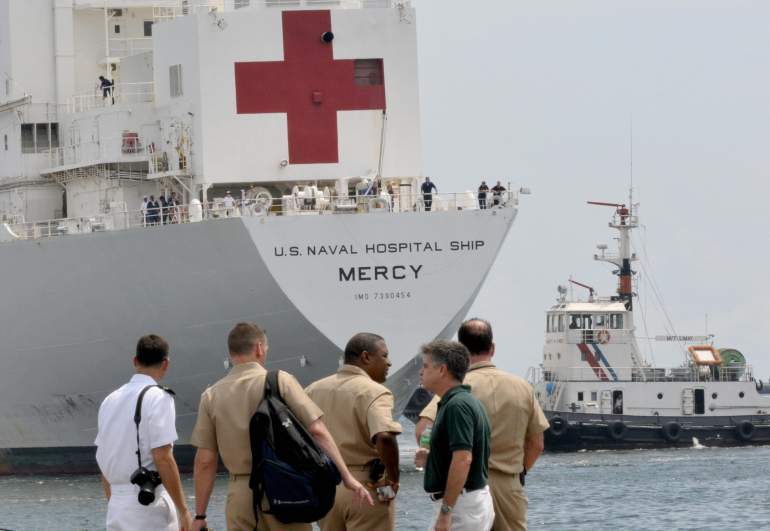
JAY DIRECTO/AFP via Getty ImagesUS naval officers await the berthing of USNS Mercy at Manila’s port in the Philippines.
READ NEXT: Ventilators Can’t be Manufactured Fast Enough for Expected Wave of COVID-19 Patients